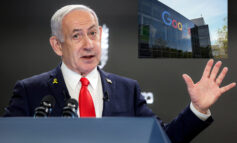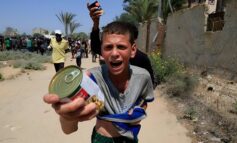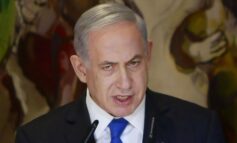Israeli aggression continues to escalate in Palestine, Syria and Lebanon, following a clear strategy that Israeli leadership has openly admitted aims to redraw the regional map of the Middle East. This aggressive policy is bolstered by strong U.S. support, further reinforced by President Trump’s threats against the residents of Gaza, even as Palestinians endure a new blockade restricting food supplies while Israeli Prime Minister Benjamin Netanyahu signals a return to war.
As negotiations regarding the fragile ceasefire continue, Trump’s administration has unexpectedly opened direct channels of communication with Hamas, a group Washington has designated as a terrorist organization since the late 1990s. Meanwhile, Abu Ubaida, spokesperson for Hamas’ military wing, Al-Qassam Brigades, reaffirmed the resistance’s readiness to shatter the last remnants of Israeli dominance, stating that Hamas honored the ceasefire agreement out of respect for its mediating allies.
Despite the escalating situation in Gaza and the West Bank, as well as ongoing Israeli continuous violations of the ceasefire agreement in Lebanon, the situation in Syria has taken center stage in the Arab world, with growing fears of a civil war as tensions erupt in multiple regions. The crisis has even reached Syria’s coastal provinces, where sectarian tensions have intensified after militant groups — remnants of the former Syrian army — launched attacks on the new Syrian government’s security forces.
While the new leadership in Damascus has hesitated to decisively respond to unrest in Sweida and attacks in Jaramana near Damascus, fearing Israeli retaliation under the pretext of protecting the Druze, it has instead declared a state of emergency and deployed thousands of fighters to Latakia and Tartous, both Alawite-majority provinces, to crack down on insurgents following a series of deadly assaults that killed more than 10 security personnel.
Gaza on the brink of explosion
Gaza remains a powder keg, on the verge of an all-out explosion, as long as Israel continues to obstruct the implementation of the second and third phases of the ceasefire agreement, whose first phase ended on March 1. Additionally, Israel’s weaponization of starvation has become a persistent tool of intimidation for submission.
Given the Israeli government’s history of reneging on agreements, Netanyahu threatened on Sunday to resume military operations in Gaza, vowing to achieve Israel’s war objectives — either through negotiations or military means.
The Trump administration has fully endorsed Israel’s position, with Trump issuing what he called a “final warning” to Hamas on Wednesday, demanding the immediate release of hostages still held in Gaza.
“To the residents of Gaza: A beautiful future awaits you, but not if you keep the hostages,” he warned on his Truth Social platform. “If you keep the hostages, you are dead! Make the right choice.”
Trump also warned Hamas that any delay would lead to its “inevitable demise”, urging the group to leave Gaza immediately before it’s too late.
“Release the hostages now, not later, and return the bodies of those you killed, or this will be your final warning!”
Trump also pledged full support for Israel’s military actions, stating that he would ensure Israel has “everything it needs to finish the job.”
Since Sunday, Israel has suspended all shipments of goods and supplies to Gaza, warning of further consequences if Hamas refuses to extend the ceasefire’s first phase. This decision has worsened the humanitarian crisis, leading to severe shortages of food and fuel, further exacerbating the daily suffering of Gaza’s residents.
In a major diplomatic development, the Trump administration has launched direct negotiations with Hamas in Qatar to secure the release of American hostages still held in Gaza. Reports suggest that these unexpected talks have expanded to include discussions on a comprehensive prisoner exchange in return for a long-term truce in Gaza.
Reports indicate that Israel had only partial knowledge of these negotiations, learning about them through indirect channels, signaling that the U.S. did not fully coordinate with Israel on all aspects of the discussions.
Hamas has reportedly expressed willingness to release all hostages in exchange for U.S. guarantees that negotiations will progress into the second phase of the ceasefire — a long-term truce — rather than disarmament, a demand Israel insists on, even at the risk of renewing the war.
According to Western sources, two direct meetings have taken place between Hamas officials and U.S. representatives in Doha in recent days, following earlier contacts dating back to January.
Egyptian plan and Arab diplomatic efforts
On Tuesday, the extraordinary Arab League summit in Cairo concluded with a final statement emphasizing the urgent need to maintain the Gaza ceasefire and calling on the U.N. Security Council to deploy peacekeeping forces to protect the Palestinian people.
Egyptian President Abdel Fattah el-Sisi announced that Arab leaders had adopted Egypt’s plan for Gaza’s reconstruction, which prioritizes Palestinian rights and dignity while ensuring that rebuilding occurs in phases.
Arab League Secretary-General Ahmed Aboul Gheit stated that the summit rejected any attempts to forcibly displace Palestinians and emphasized the importance of maintaining territorial continuity between the West Bank and Gaza.
The Egyptian proposal includes forming an independent technocratic committee to govern Gaza for a transitional six-month period under the Palestinian government’s supervision.
Additionally, the plan allocates temporary housing for more than 1.5 million displaced people inside Gaza and estimates the reconstruction cost at $53 billion, with a five-year completion timeline.
The summit announced joint Arab-Islamic coordination efforts to present the plan to the international community, seeking global support for its implementation.
While Israel rejected the Arab League’s statement on Gaza, claiming it failed to reflect post-October 7 realities, Hamas welcomed the rejection of displacement efforts and supported the formation of a reconstruction and governance committee for Gaza.
Syria: On the edge of chaos
Returning from the Arab League summit, Syrian interim President Ahmed Shar’a faced a nation on the brink of civil war, as insurgent forces continued attacks across multiple regions, particularly in the coastal areas.
Militants — whom Damascus labels as remnants of the former regime — launched coordinated attacks in Latakia and Jableh, while several new opposition factions declared their formation, including:
- “The Coastal Shield Brigade”
- “The Military Council for the Liberation of Syria”
The insurgents claim that their operations are a response to crackdowns by the new Syrian security forces, which have allegedly been conducting arbitrary raids in Alawite-majority villages.
Amid ongoing clashes, protests erupted in Tartous, Jableh and parts of Damascus, where security forces used live ammunition to disperse demonstrators.
Meanwhile, Israel has renewed its threats to intervene militarily in Syria under the pretext of protecting the Druze minority, particularly in Jaramana and Sweida. Netanyahu has warned that any threat to the Druze community would provoke Israeli military action against the new Syrian government.
As clashes intensify in Syria, Turkey has also weighed in, with Foreign Minister Hakan Fidan calling for the dissolution of the Kurdish-led SDF and demanding the expulsion of 2,000 non-Syrian fighters from its ranks.
With these escalating tensions, the region is on the verge of a major geopolitical shift, fueled by U.S., Israeli and regional power struggles.






Leave a Reply